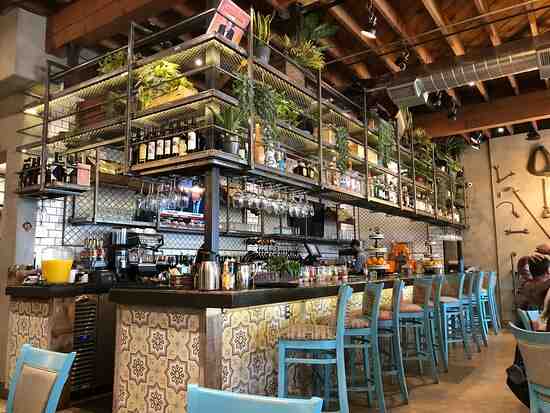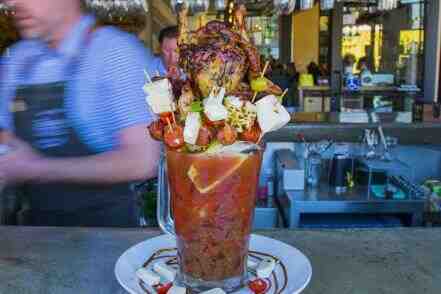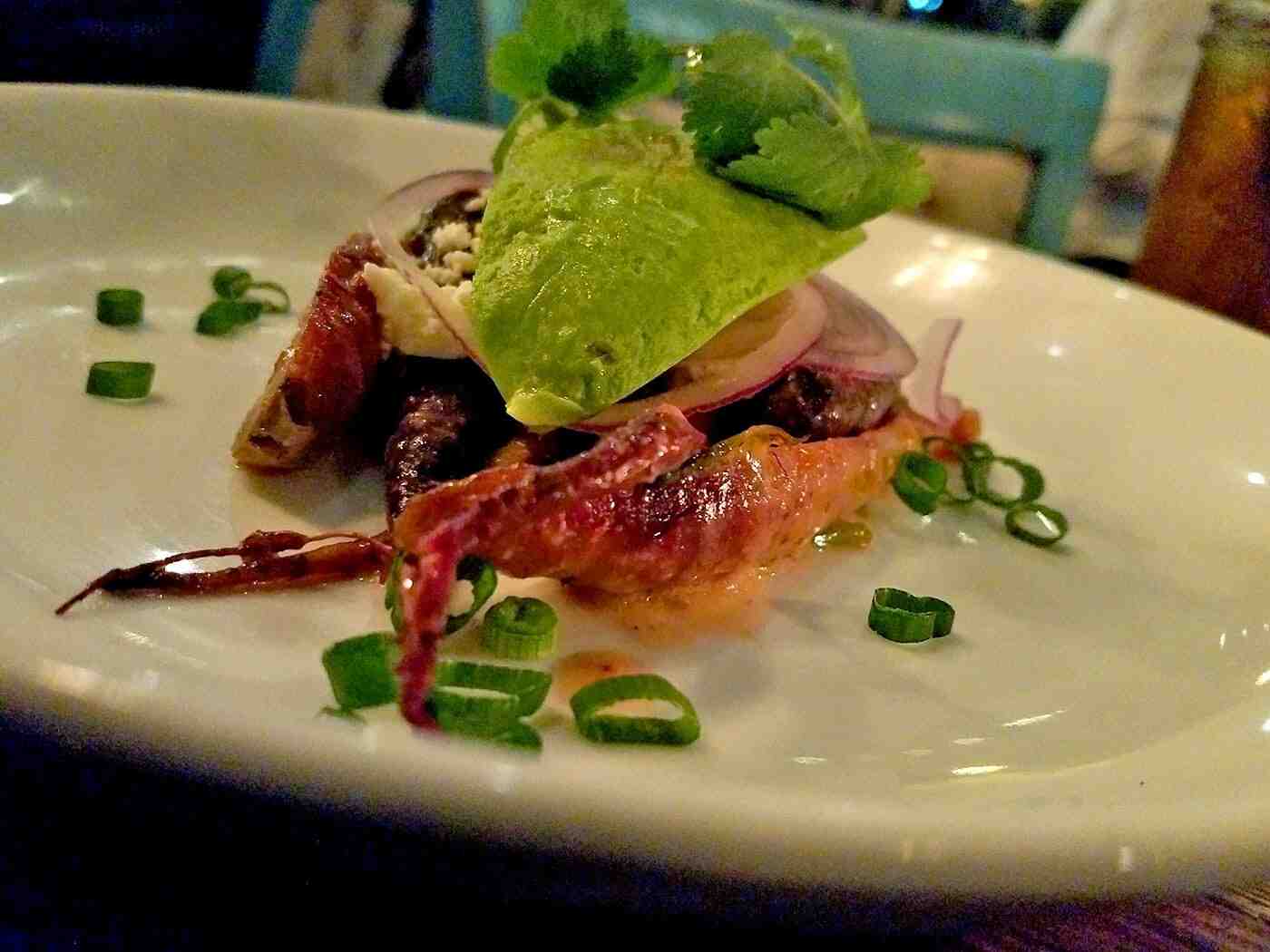What are the disadvantages of farm-to-table?

Disadvantages of Farm to Table:
- If you’re planning to open a farm-to-fork restaurant, you’ll need to constantly change your menu. …
- In the past, some restaurants have taken advantage of the buzzword for their own benefit by claiming to be farm-to-table without actually using local ingredients.
What are the benefits of farm to table? Farm-to-table food is healthier than processed and packaged food. First, it’s all natural and many of the ingredients and products are grown or grown locally. Second, it probably contains fewer calories, fat, sugar, and carbohydrates than the prepackaged foods you find at the store.
What is another name for farm-to-table?
Farm-to-table can also more loosely refer to farmers’ markets, community-supported agriculture (CSA), and other places where people can buy food directly from producers, with the table at home yours
What does farm to table mean?
Food. Simply put, Farm-to-Table refers to food that comes directly from farms and goes directly to the table to be consumed by eliminating any intermediaries such as a market, grocery store, etc.
Who coined the term farm to table?
If you want to know how the ‘farm to table’ movement is progressing ask any of the 800 postmasters this week. If you want a particularly enthusiastic response, ask Mr. Colin M. Selph, creator of the idea and inventor of the phrase.
What is the disadvantage living in farm?
A disadvantage of living on a farm is that it can be less convenient for the family’s day-to-day life. Now, it all depends on where your home is located. Some farms are out in the sticks, miles from the nearest town. Others are a short drive from the main city center – it varies across the country.
Is it safe to live next to farms?
Do farmers experience greater health threats than the general population? Farmers are obviously exposed to much higher exposure levels, and contact with farm animals is a major risk factor for carrying antibiotic-resistant bacteria. Long-term exposure to barn dust can also cause chronic respiratory conditions.
Is it hard living on a farm?
While country life can be slow and relaxing, being a farmer can also be hectic, busy and challenging. You will have many tasks to attend to every day. Farmers usually rise with the sun and work hard throughout the day and sometimes into the night.
Is farm-to-table sustainable?
Environmental Benefits When you dine at a farm-to-table restaurant, you’re also helping the environment. Because local food is transported short distances, less fuel is consumed and fewer emissions are released in the process of bringing ingredients closer to the restaurant.
Is farm-to-table healthier?
Eliminate processed foods. Farm-to-table food is healthier than processed and packaged food. First, it’s all natural and many of the ingredients and products are grown or grown locally. Second, it probably contains fewer calories, fat, sugar, and carbohydrates than the prepackaged foods you find at the store.
Is farm to fork sustainable?
The Farm to Fork Strategy is in line with the Sustainable Development Goals and also aims to raise standards globally, through international cooperation and trade policies so that its ecological transition is not offset by the outsourcing of unsustainable practices in other regions.
How does food get from farm-to-table?

In the supply chain model, food must be transported through five different suppliers. Food travels from the farmer to a processing center, where that food is harvested; then to a regional distribution center and then to the local retailer or restaurant; and finally to the hungry consumer.
Where does the food go after the farm? Food origins Produced directly on farms or from food from farms. Farmers grow food, which they harvest, store and transport to markets or processing plants for preservation and processing into a variety of food products.
What is the process from farm-to-table?
At its core, farm-to-table means that food to your table comes directly from a specific farm, without passing through a store, market or distributor along the way. It is not a regulated phrase, so it can be used by anyone who feels that their offerings fit the definition.
What is the process our food goes through from the farm to our plate?
The journey from farm to plate consists of five distinct stages: production, processing, distribution, retail and consumer.
What does farm to table mean?
Food. Simply put, Farm-to-Table refers to food that comes directly from farms and goes directly to the table to be consumed by eliminating any intermediaries such as a market, grocery store, etc.
How does food get from farm to grocery store?
Grocers obtain their products primarily through distributors or brokers. Stores can also buy products from auctions, directly from importers/exporters at the port of entry, or receive donations from local farms. A grocery store may purchase different products from various sources.
How is fresh produce transported?
There are three main options for transporting products: air, rail and sea. Air transport is the most expensive but necessary for foods that have a very short shelf life and require fast shipping to reach the consumer while they are still fresh.
Can you buy food directly from farms?
Farmers markets sell fresh, local food at very competitive prices. Buying food directly from family farmers means your food dollar stays in your local community, boosting other independent businesses and the local economy.
How food gets from farms to store shelves?
Why are the shelves bare at the grocery store?
The supply chain has currently been disrupted by the COVID-19 pandemic. Suppliers cannot produce enough products due to plant closures. The logistics industry is unable to move inventory freely and timely around the world, mainly due to port congestion, shortage of truck drivers and lack of warehouse workers.
How does food get to the grocery store?
Most retail establishments obtain their grocery supplies through wholesale or bulk distributors. They deal in the supply of mainstream or specialty items (such as organic, natural and world foods), buying directly from manufacturers and then selling to retailers.
How long can farmer’s dog food sit out?

DO NOT LEAVE PET FOOD OUT TOO LONG. Canned foods, once opened, can be left out for 2 to no more than 4 hours. Any unused canned food should be immediately refrigerated.
Do you heat farm dog food? Put some hot water. You can also try adding some warm bone broth to their bowl (see below). However, we do NOT recommend heating food in the microwave as this will destroy the natural nutrients in the food, the best part of our fresh recipes!
Is it OK to leave dog food out all day?
For dogs that are at a healthy weight and do not have accidents in the house, you may be able to use the free-feeding method. This means leaving food out all day and letting your dog graze. This can be a good method for very active dogs who burn more calories than their sofa friends.
How long can dog dry food sit out?
The answer to how long to dry dog food is simple: it should be fine for about 8 hours. When you put dry kibble in your dog’s bowl, you can usually leave it for the rest of the day without worry. It does not contain any moisture that can cause mold or mildew.
What happens if you leave dog food out?
Leaving the croquettes out all day can cause a loss of aroma. Dogs can turn their noses up at stale food that doesn’t smell fresh and can be picky about eating it. For this reason, many dog owners place kibble in airtight containers to preserve its freshness.
Does farmer’s dog dog food have to be refrigerated?
Should I refrigerate food? Yes! Because our food is really fresh and we don’t use any preservatives, it’s essential that you treat it like real food (because it is!). Keep food at a safe temperature in the refrigerator or freezer.
Is farmer’s dog food cooked or raw?
The Farmer’s Dog Food is cooked at low temperatures, so pet owners never have to handle raw food. It arrives frozen, and all meals must be kept in the freezer and thawed in the refrigerator before serving. Farmer’s Dog freezes several servings in each package.
Can you warm the farmer’s dog food?
You can also try adding some warm bone broth to their bowl (see below). However, we do NOT recommend heating food in the microwave as this will destroy the natural nutrients in the food, the best part of our fresh recipes!
How long is the farmer’s dog food good for?
Once the food has cooled and portioned out according to your instructions, you can set aside a few portions for each dog and put them in the fridge…you can keep the food in there for up to 4 days. Store the rest in the freezer.
Is the farmer’s dog food recommended by vets?
Overall, The Farmer’s Dog Food brand has been recommended by veterinary nutritionists.
How long does farmer’s dog food last?
No preservatives are ever used in The Farmer’s Dog recipes, so the food has a much shorter shelf life of 4 days once thawed in the refrigerator. If kept frozen, packaged meals will stay fresh for 4 months.
Who started farm-to-table?

Chef Alice Waters opened the first farm-to-table restaurant in California in 1971. Her restaurant, Chez Panisse, featured fresh, locally grown ingredients as part of a seasonal menu. Waters was inspired by the sustainable community food structures he enjoyed while living in France.
When did the farm-to-table movement begin? Farm-to-table began as an offshoot of the West Coast hippie movement of the 1960s and 1970s, but has since become a worldwide phenomenon that shows no signs of slowing down.
What is the farm-to-table movement in the United States?
If you’re wondering “What exactly is the farm-to-table movement?†it boils down to this: The farm-to-table movement broadly refers to food made from locally sourced, often natural or organic ingredients.
Why is the farm-to-table movement important?
The farm-to-table movement’s push to bring locally grown food into restaurants, stores and homes has many positive benefits for consumers, meaning you. Locally sourced food is fresh and delicious, plus you support local farmers by buying it.
What does farm-to-table means?
Simply put, Farm-to-Table refers to food that comes directly from farms and goes directly to the table to be consumed by eliminating any intermediaries such as a market, grocery store, etc.
What is the big idea behind farm-to-table?
Farm to table is a movement that promotes locally grown and/or organic food. The idea is that our meals should be based on where we live and what we eat. By eating homegrown food, we can support the local community and prevent food miles from polluting our environment.
How has farm to table changed America?
By eating homegrown food, we can support the local community and prevent food miles from polluting our environment. With the rise of farm to table, it has been easy for consumers to change their lifestyles by becoming more active in their food choices.
What is the farm to table movement?
The farm-to-table movement is a social movement that calls on consumers to choose natural, often organic, locally produced foods over imported or processed alternatives. The movement supports community rather than global food systems.
Who coined farm-to-table?
If you want to know how the ‘farm to table’ movement is progressing ask any of the 800 postmasters this week. If you want a particularly enthusiastic response, ask Mr. Colin M. Selph, creator of the idea and inventor of the phrase.
What is another name for farm-to-table?
Farm-to-table can also more loosely refer to farmers’ markets, community-supported agriculture (CSA), and other places where people can buy food directly from producers, with the table at home yours
Who was involved in the farm-to-table movement?
In 1971, Alice Waters, a recent Berkeley graduate, opened the doors to a restaurant called Chez Panisse. Located in Berkeley, California, a center of countercultural thought, it became the incubator of the farm-to-table movement. Waters settled on the concept of sourcing only local vegetables and buying from local farmers.
Sources :
